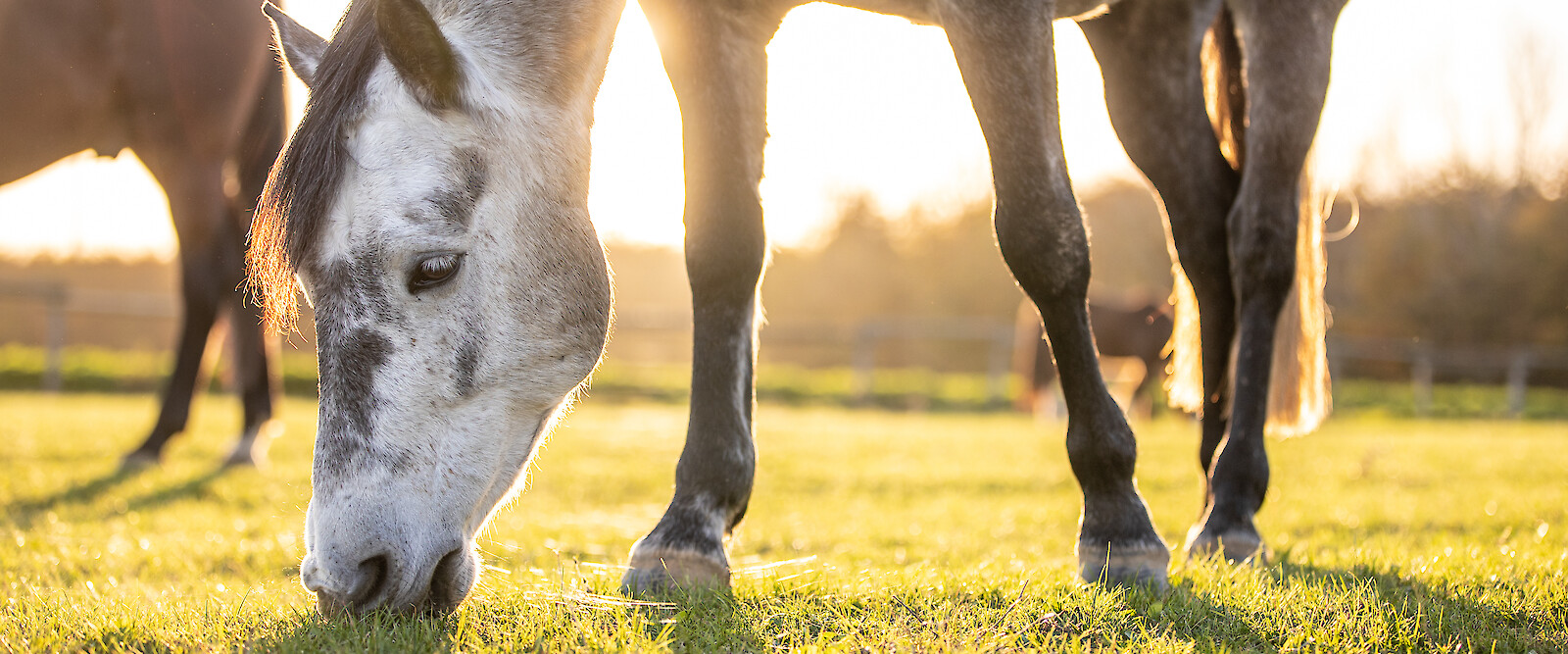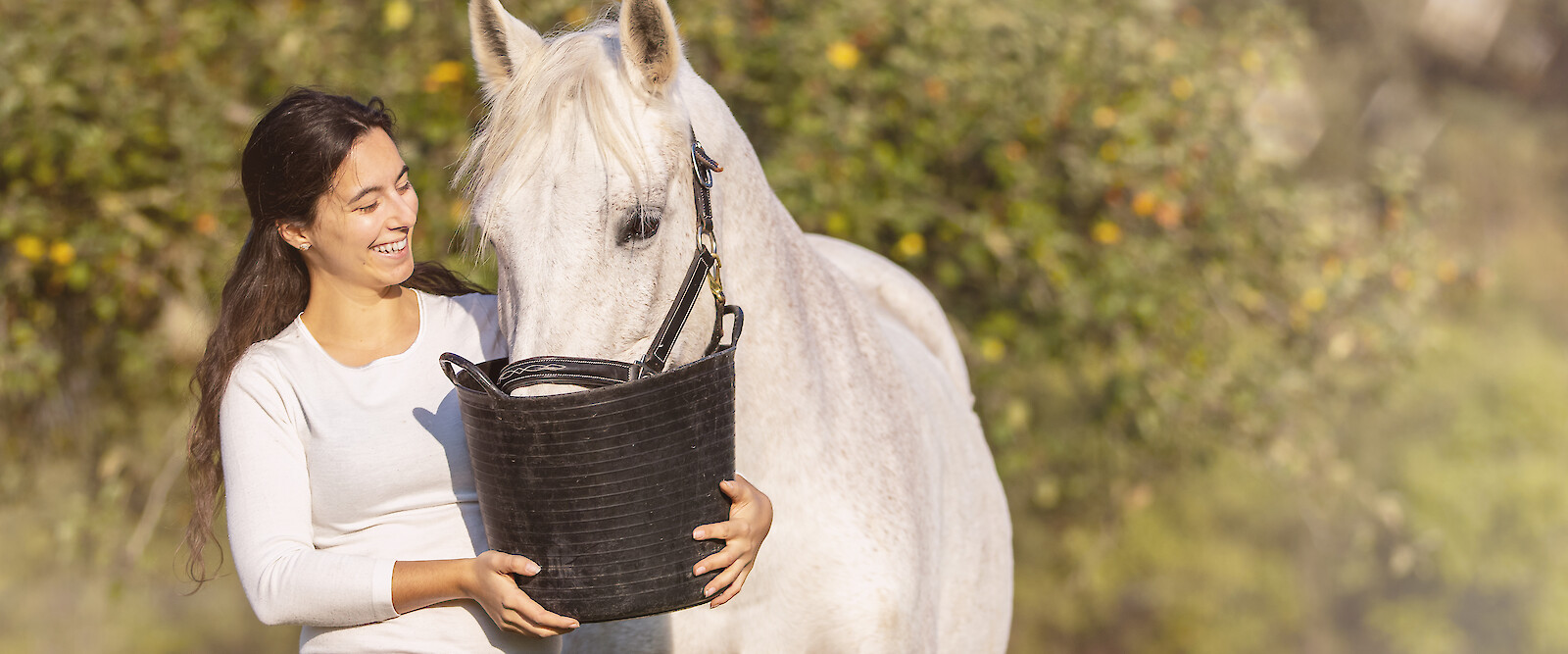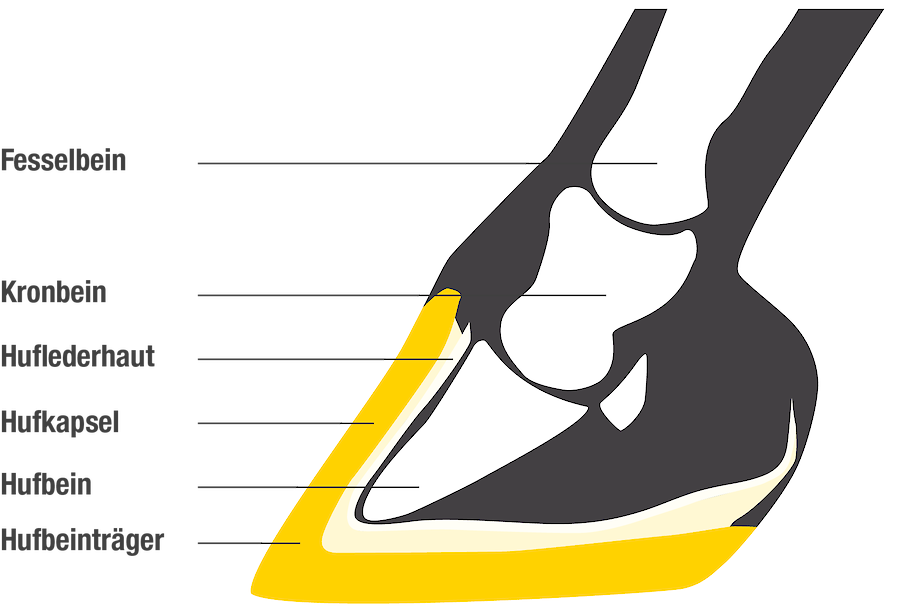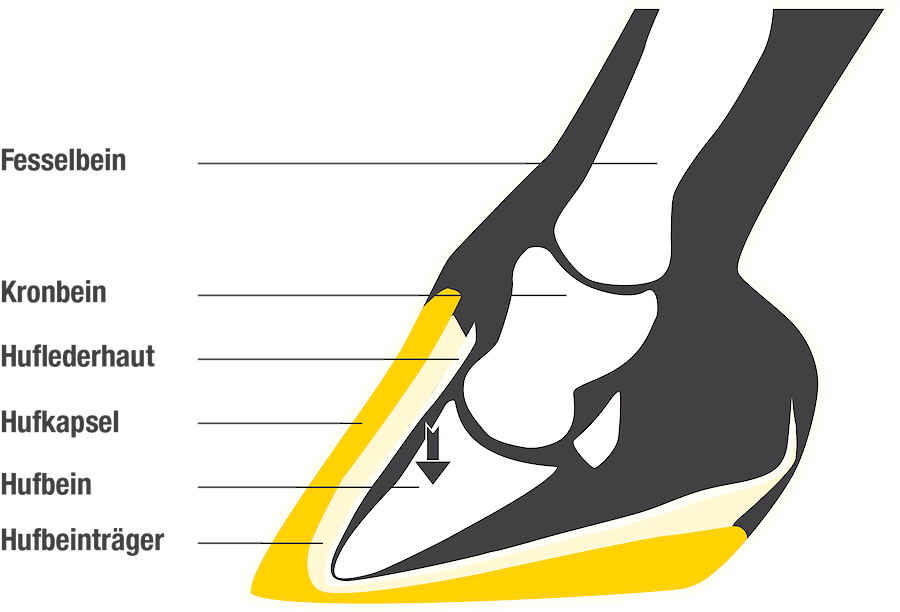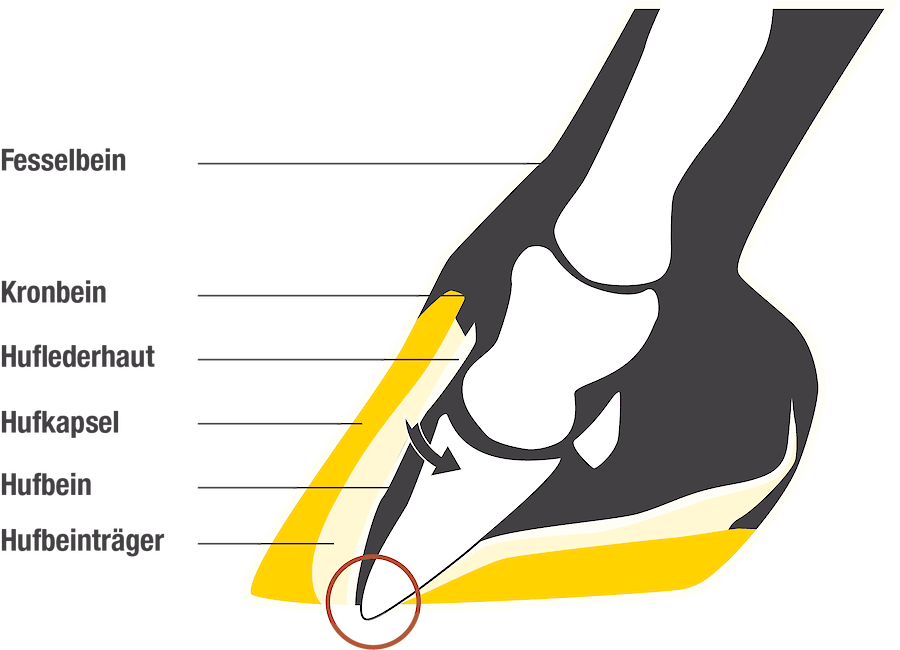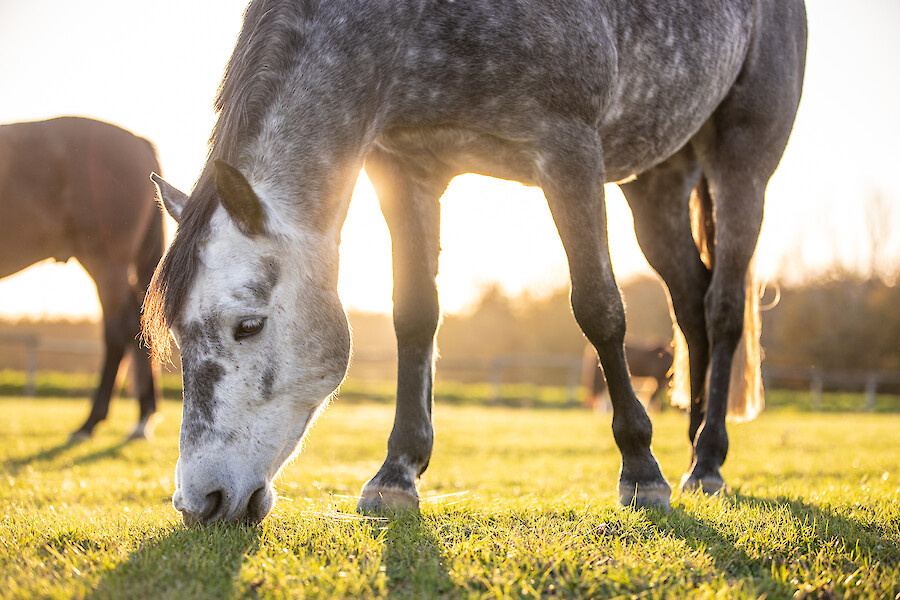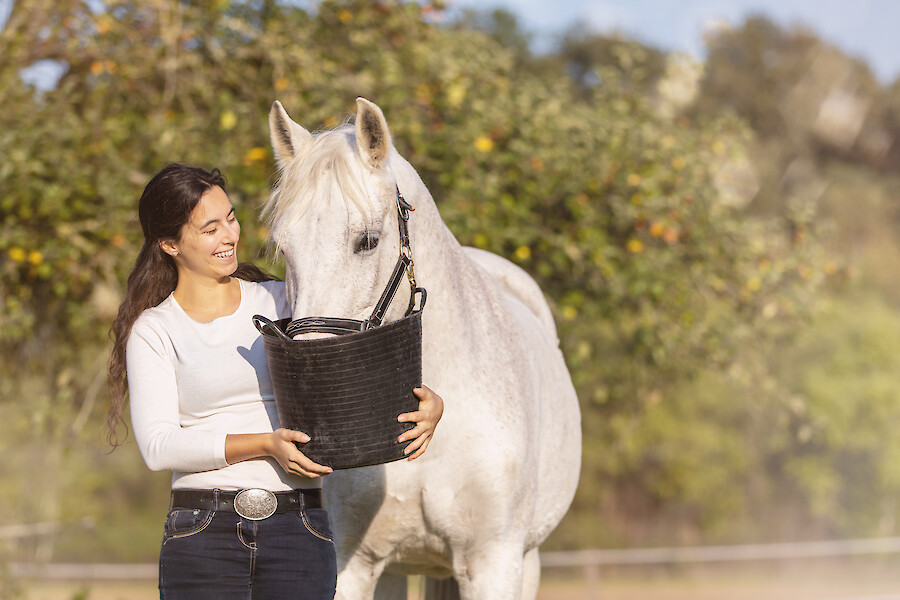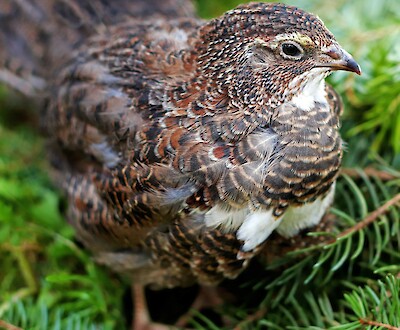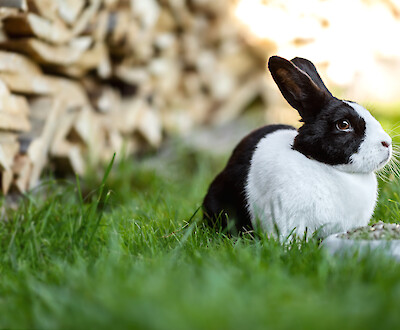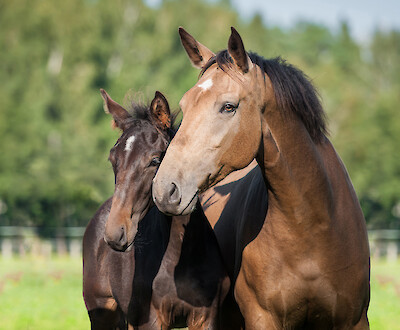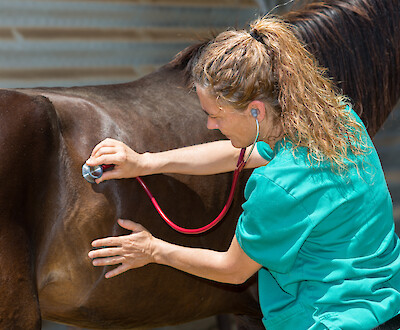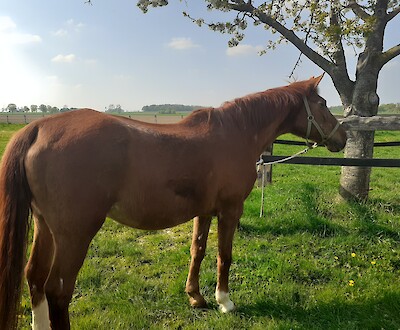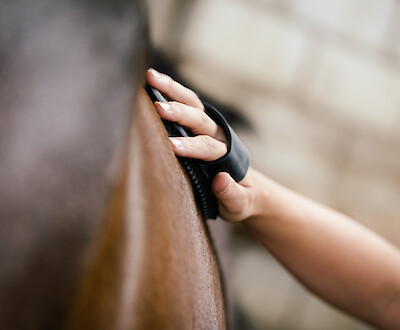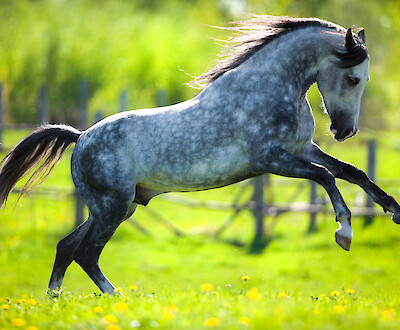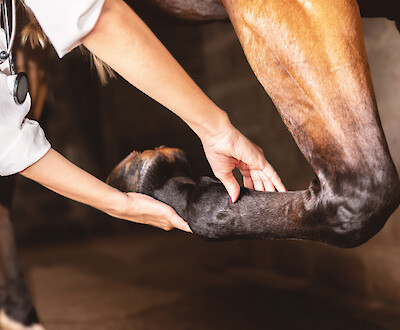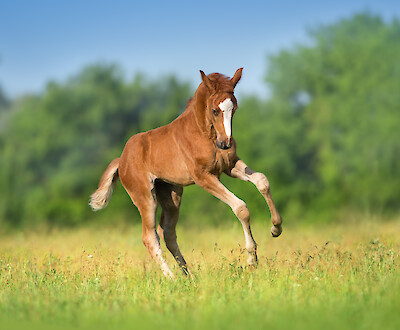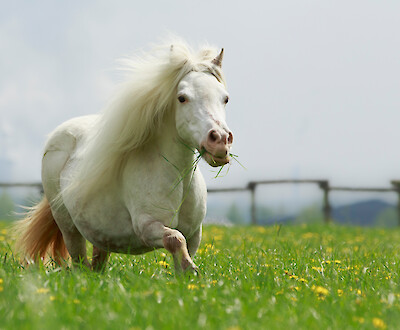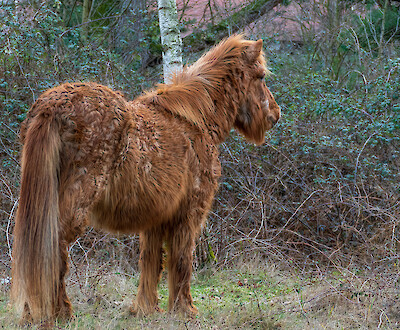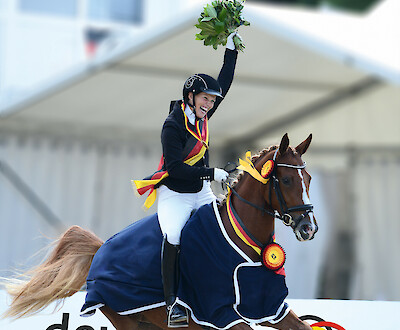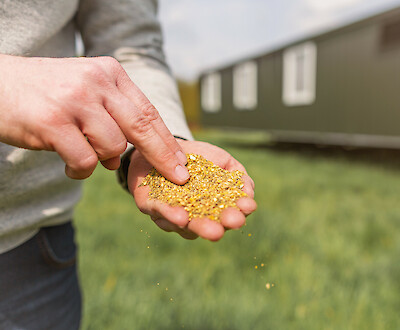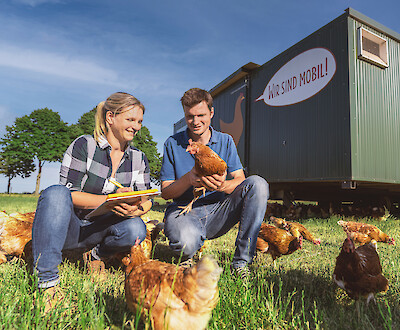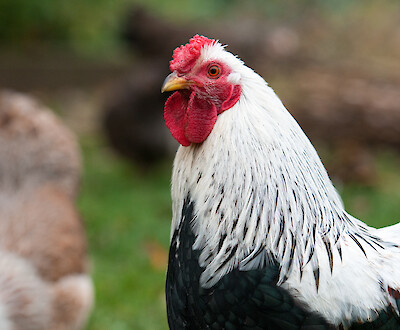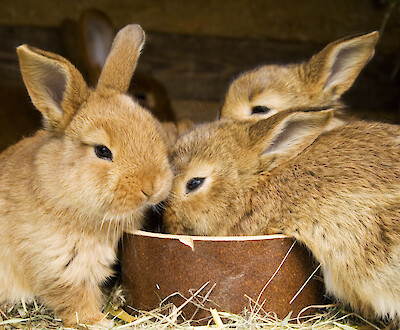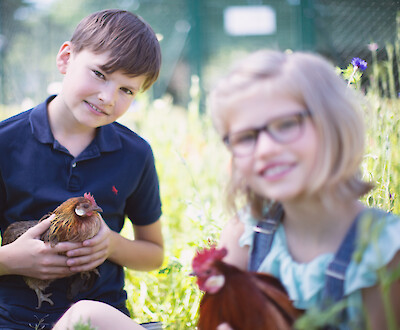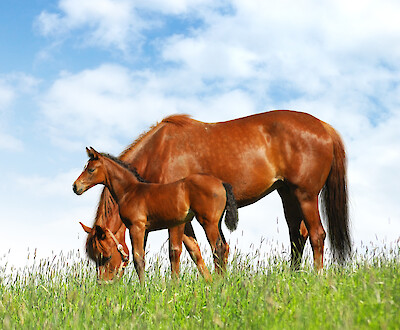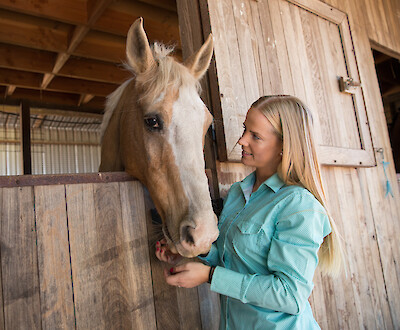One of the most painful diseases of the horse
Recognize laminitis in horses in time, treat properly and prevent it
Laminitis has a lasting effect on the health of the horse's hooves. Experience shows that the disease leads to horses being temporarily unable to bear weight. If an outbreak cannot be prevented with preventive measures, horse owners must act quickly. After all, laminitis can take on a chronic course within 72 hours. As a result, recurring outbreaks of the disease can occur - so-called deer thrusts - which have a lasting impact on the welfare of the horses. Severe outbreaks can even result in the death of the animal. Adjusting the feed plays a key role here.
Laminitis - a particularly painful disease of the horse
Laminitis (syn. stiff) is a diffuse inflammation of the hoof corium and is one of the most painful diseases of the horse. In horses with laminitis, the connecting layer between the outer horn capsule and the inner bone - called the coffin bone - becomes inflamed. The resulting swelling in the horn capsule causes a disturbance in the blood circulation of the hoof tissue. This sometimes causes massive pain in affected horses. In particularly severe cases, the suspension apparatus destroyed by laminitis can no longer hold the coffin bone in place. As a result, the coffin bone lowers in the hoof and rotates. In the worst case, the entire hoof capsule detaches from the corium and falls off. This is also called "shoeing out".
Laminitis: One disease, many causes
Laminitis can have many causes. Often, incorrect husbandry or incorrect feeding are the reason for an outbreak. Depending on the cause, a distinction is made between different types:
The types of laminitis
-
In most cases, incorrect feeding is the reason for the occurrence of laminitis. Possible triggers are, for example, intolerance to haylage, obesity, intake of pasture grass with a high fructan content, excessive amounts of feed, high protein content or intake of a concentrated feed with a high proportion of poorly digestible starch.
-
This type of laminitis can occur when horses trot or gallop a lot on hard surfaces. It can also occur when a deformity in one of the hooves causes the hoof to be subjected to an unnatural amount of stress. The reason for this can sometimes be a congenital malposition or deformation due to hoof work errors.
-
In some cases, the placenta does not detach properly after the foal is born. If it is not expelled from the mare shortly after birth, toxic substances can build up in the body. These toxins can cause inflammation of the hoof corium, which then leads to laminitis.
-
Ingestion of poisonous plants (e.g., vetch, black locust, castor bean, acorns, or similar) can also cause laminitis. Ingestion of the plants in unkempt pastures can cause disruption of blood flow to the corium of the hoof, resulting in laminitis.
-
Unlike other animal species, the horse's stomach permanently produces gastric acid. Therefore, the gastrointestinal tract of equids is dependent on regular feed intake. Only a feed rich in raw fibers ensures that the acid does not attack the gastric mucosa. After just four hours of abstinence from food, excess acid builds up in the stomach, which can damage the walls of the digestive tract. Through the damaged stomach skin, toxins can then enter the horse's body and can subsequently also reach the hooves.
-
If the metabolism gets off track (e.g., in a metabolic disease such as Equine Metabolic Syndrome [EMS] or Equine Cushing's Syndrome), this also promotes the occurrence of laminitis. Certain medications (e.g. cortisone preparations) are also suspected of causing laminitis. Other possible causes of this painful condition are cycle disturbances in the mare (permanent or absent heat), colic, intestinal inflammation or cross-contamination.
How feeding-induced laminitis develops
Feeding errors happen quickly. That's why feeding-induced laminitis is the most common form of laminitis. If left untreated, large amounts of corn and barley, for example, can cause faulty fermentation. This is because the starch structure of both feed components is difficult for the digestive enzymes in the horse's small intestine to "crack." As a result, large portions of the starch contained in the feed may pass undigested from the small intestine into the appendix behind it. The bacteria there break down the starch. This produces lactic acid, which kills bacterial cultures in the appendix. This produces so-called endotoxins - toxins that damage the horse's intestinal wall. However, a damaged intestinal wall loses its protective function and becomes permeable, allowing the toxins to enter the horse's body and cause inflammation or laminitis. But also the fructans (storage carbohydrates) contained in fresh pasture grass, which horses can not digest, but they can also trigger laminitis.
Stages and symptoms: How to recognize laminitis
The course of laminitis can be divided into different stages. Depending on which stage of the disease is present, the symptoms of the disease differ.
Stages of laminitis
This stage describes the beginning of the disease. The disease is initially latent, i.e. without any recognizable signs of disease.
From this stage, horse owners can identify the first symptoms. Veterinarians also refer to the sudden appearance of the first acute, clinically recognizable laminitis symptoms as a "deer thrust". These include, for example:
- Changes in posture or shifting of weight (affected horses push the hind legs under the body to relieve the painful hoof)
- frequent unloading of the front hooves one after the other (the so-called "tripping")
- changes of movement in walk/trot. These changes are divided into four degrees of severity:
Grade 1: alternate lifting of hoves at rest, inconspicuous movement at a walk and stiff gait at a trot.
Grade 2: willing but stiff gait at a walk; lifting of one foot possible
Grade 3: horse moves only reluctantly; resistance when trying to pick up a foot
Grade 4: Complete refusal to move; walking is possible only under duress. - Lameness
- Pain on turning (turning is hardly possible in acute laminitis)
- Pulse more palpable
- swelling and warming of the coronary band (transition between hoof and horse leg)
- increased temperature of the horn capsule, diffuse sensitivity to pressure during hoof forceps examination, especially in the dorsal sole and wall area
The deer thrust lasts longer than 48 hours. This stage is the continuation of the acute stage and begins with the first signs of a change in the position of the coffin bone in the hoof capsule (e.g. coffin bone rotation). The chronic stage is divided into a chronic active stage, a chronic stable stage and a chronic stage: in the chronic stable stage, acute symptoms no longer occur, while in the chronic active stage, acute symptoms continue. The chronic stage with specific complications is when there is subsidence or rotation of the coffin bone.
Immediate measures for acute laminitis: cool, cool, cool!
Cooling not only relieves your horse's pain. You also actively inhibit the inflammation. Place the hoof in ice water and add new ice at regular intervals. Notify the veterinarian immediately before taking further measures. Once the acute episode is over, immediately start searching for the causes of the disease.
Therapy: What to do about laminitis?
The appropriate therapy depends on rapid identification and subsequent elimination of the underlying cause of laminitis. This is the only way to avoid progressive damage to the hoof and a serious progression. The current stage of disease also alters the choice of remedies in the course of therapy. Coordinate all measures for the treatment of laminitis with your veterinarian.
Therapy of the acute stage
General measures
- Cold application to affected hoof initially for 2-3 days (e.g. ice bath, cool pads, etc.).
- Establish stall rest with deep, soft bedding.
- Immediately change feed to hay and straw. However, be careful not to create periods of starvation during the changeover.
- Ensure a zinc (100 mg /100 kg body mass) and vitamin E supplement (200-400 mg/100 kg body mass) in excess of requirements with the help of mineral feeds over a period of four to six weeks.
- In addition, add linseed oil to the ration (20 ml /100 kg body mass).
- In the acute stage and as prophylaxis, feed roughage with low fructan concentration and low protein content (e.g. oat straw and seasoned hay).
- As a concomitant of metabolic disease, switch to low-starch and low-sugar feeding.
- Highly pregnant mares should be fed fat-rich supplements (e.g. deukavallo Leinvital).
- With the support of the farrier, apply a hoof bandage with support for the rear half of the hoof, possibly with heel elevation.)
Medication
- If necessary, provide medicinal, pain-relieving and anti-inflammatory therapy appropriate to the degree of disease.
Orthopedic measures
- If necessary, remove shoe or pull toenails.
- Hoof correction only in case of poor hoof care (overlong toe).
- Support of the rear half of the hoof (e.g. deer cast or alternative measures with frog support (leaving the sole free in front of the frog tip).
Continuation of the measures of the acute stage until a chronic stable stage is reached.
General and local measures under accompanying veterinary supervision:
- deep and soft bedding
- Exercise on soft ground (under no circumstances under duress!)
- Implementation of further systemic measures:
- restrictive feeding, zinc and biotin as needed
- medicinal measures (pain therapy, therapy of the underlying disease depending on the cause)
- If Equine Cushing Syndrome (ECS, PPID) is present: Treatment with a dopamine agonist.
Acting correctly against feeding-induced laminitis
Even in the case of feeding-induced laminitis, the therapy depends on the exact cause of the laminitis. Is the laminitis associated with a metabolic disease such as Cushing's or EMS? If so, horse owners should adjust their horses' feed accordingly. A pellet that is low in starch and sugar but high in crude fiber (e.g. deukavallo Top Gastro) or muesli (e.g. deukavallo Getreidefrei 21) is ideal for this purpose. If the laminitis is the result of long-term feeding with poorly digestible starch (e.g. with untreated or only moderately treated corn or barley), the horse should be thoroughly cured. The horse should then be fed a highly digestible feed with a high degree of starch breakdown (e.g. deukavallo Top InForm).
The chances of recovery from laminitis are good - but...
The good news first: You do not necessarily have to euthanize a horse suffering from laminitis. If detected early and treated quickly, laminitis can be cured relatively quickly. Nevertheless, the chances of curing laminitis depend on many factors. These include the degree of the disease, the age of the horse, possible concomitant symptoms, the gait after the disease, etc. Once the causes of laminitis have been eliminated, recovery takes a few days to weeks, depending on the overall condition of the hooves.
Prophylaxis and prevention of laminitis: this is how it works
Feeding sufficient crude fiber is the basis for preventing laminitis. Seasoned hay and oat straw are particularly suitable for this purpose. If you still want to put your horse out to pasture, always keep in mind that pasture grass is subject to certain temperature and seasonal fluctuations in terms of fructan content. For example, especially in August, the grass shows particularly low fructan content. In contrast, frosty, cold and sunny weather leads to intensive fructan storage, which in turn favors the development of laminitis. In principle, warm days with overcast skies lead to low fructan storage.If you put your horse back to pasture after it has survived a bout of laminitis for some time, initially overstory pasture whose grasses and plants are somewhat drier is more suitable. Lean pastures with extremely short grass, are not an alternative. The reason: the stressed pasture stores high amounts of fructan in the short sward. The grass blades should be more than ten cm high. However, there is no hundred percent certainty that your horse will not get laminitis if it is in the pasture. Therefore, horses with a history of laminitis are better off in the paddock.
When feeding concentrates, be sure to break down the starch of its components. Corn or barley contained therein should always have been heated at least via a flaking process. A much higher degree of starch breakdown can be achieved by special processes (e.g. the opticon® process). Correspondingly treated components can be found, for example, in deukavallo Top InForm. The higher the degree of starch digestion, the less likely it is that undigested starch will enter the large intestine and cause faulty fermentation there. Finally, avoid frequent feed changes. When you do change feeds, go slowly. This way you avoid overweight and prevent laminitis as well.
Keeping your horse in a species-appropriate manner is the cornerstone of successful laminitis prevention. Avoid stress for your horse. Pay attention to the condition of the pasture and remove possible poisonous plants and fungi. Good hoof care is also important: check them for stuck stones, if anything has broken off and if the horseshoe is still tight. Clean the hooves by scraping and brushing them regularly.
Conclusion
- Laminitis is a painful disease of the horse.
- The disease can lead to the loss of the affected hoof and - in severe cases - even to death.
- Depending on the cause, a distinction is made between feeding laminitis, stress laminitis, congenital laminitis, poisoning laminitis or starvation laminitis. Feeding laminitis is the most common form of laminitis.
- The treatment of laminitis is based on the underlying causes of the disease. An adjustment of the feeding is particularly important. Pellets that are low in starch and sugar or high in crude fiber (e.g. deukavallo Top Gastro or deukavallo Top InForm) are suitable for this purpose.
FAQ - Frequently asked questions
How does a horse get laminitis?
Laminitis is often caused by incorrect feeding and housing conditions. Laminitis in horses can also be a side effect of other diseases.
What can be done against laminitis?
In the case of acute laminitis, a visit to the vet is always recommended. Immediate cooling with ice water is the first emergency measure.
Why is cooling so important in acute laminitis?
Cooling can relieve the pain caused by laminitis. It also has an anti-inflammatory effect.
What are the chances of curing laminitis in horses?
How quickly and well laminitis heals depends on the individual horse. The stage of laminitis is also crucial.
Can laminitis be fatal?
In some cases laminitis can be fatal for the horse. These include chronic cases where there is constant pain and severe hoof changes.
Further links
- See the "Laminitis Guide" from the Society of Equine Medicine for more detailed information on the stages of laminitis.
Image credit: © niku16 - adobe.stock.com
Contact person

Theresa Oesterwind
Contact person


